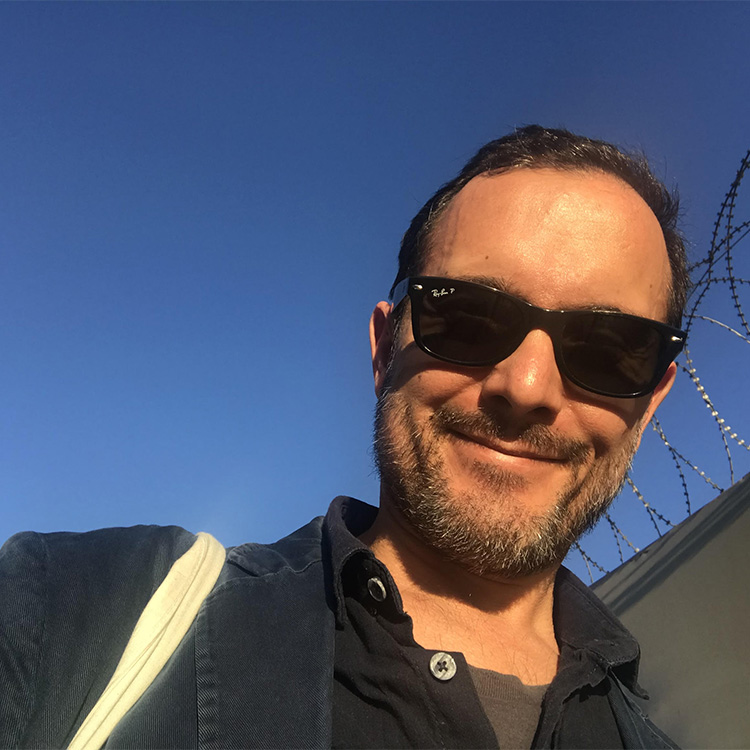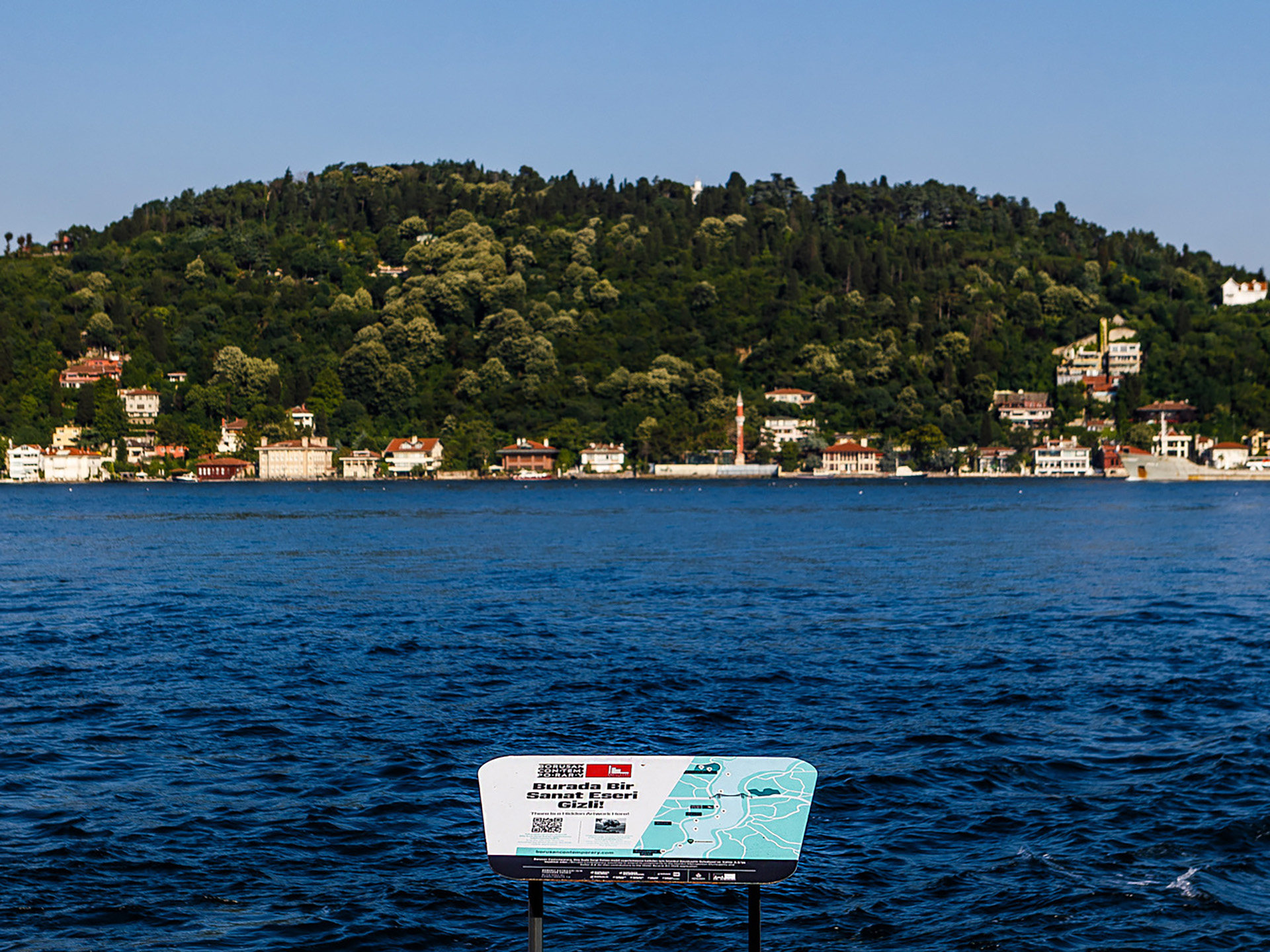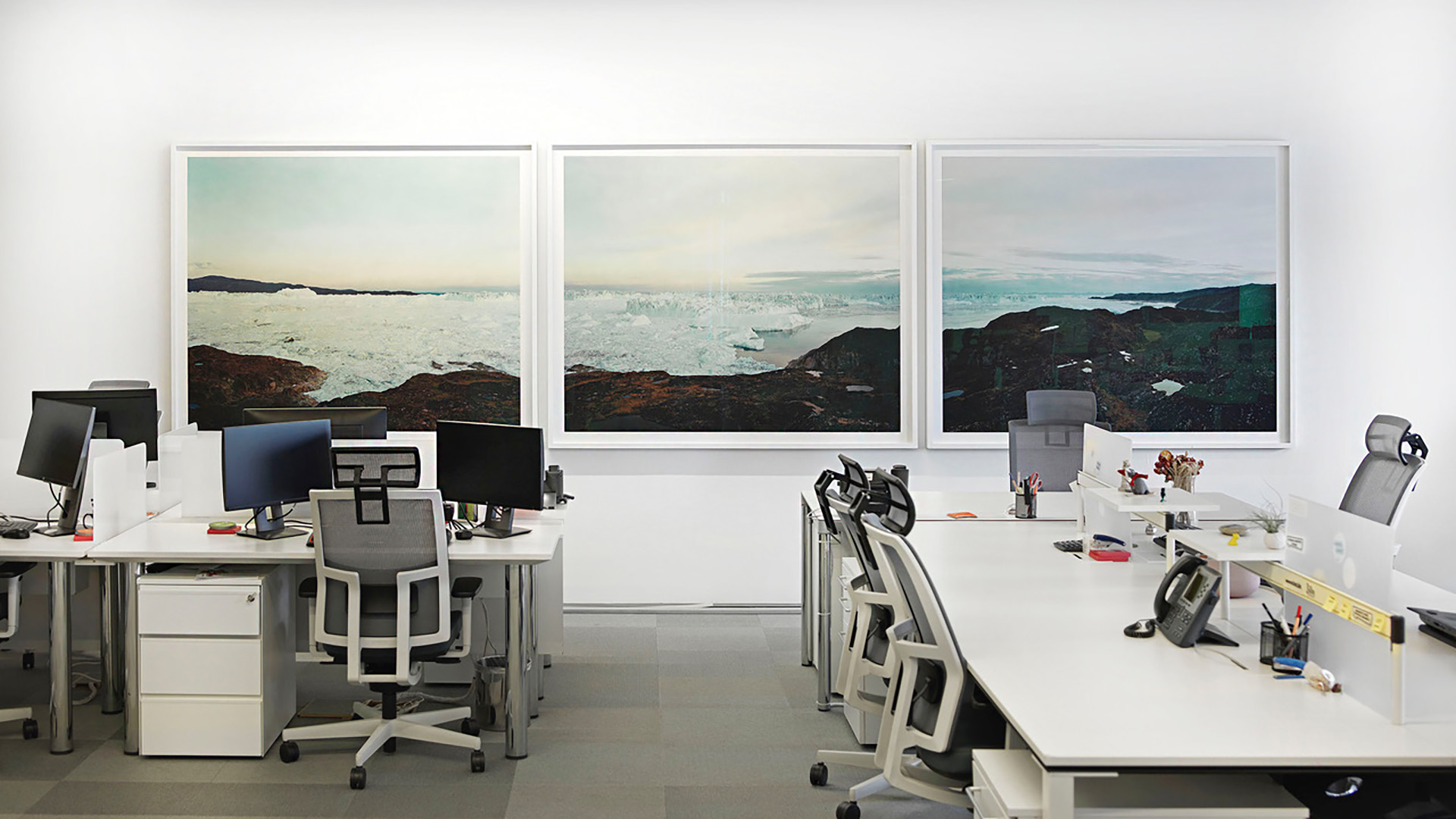Blog
A “Second New” Aquarium of Media
7 September 2021 Tue
Images from Sönmez’s final proposition for an interdisciplinary reading, Water Reverie, cling to the “neck” of the Bosphorus, which then surge forth to invade our screens.

EVRİM ALTUĞ
evrimaltug@gmail.com
Borusan Contemporary’s Water Reverie exhibition, curated by Necmi Sönmez, continues at the premises of Perili Köşk, whose creation dates back to early 1910s, and along the Strait of Istanbul. The exhibition title is derived from the 10-parts poem 1 written in 1970 by Edip Cansever, who was affiliated with the Second New poetry movement that rejected the traditional “versed” style and embraced an attitude in favor of “humanizing” 2 the phrases. Works of artists from the collection – including those by Abdurrahman Öztoprak, Peter Coffin, Shirley Shor, Ekrem Yalçındağ, Thierry Dreyfus, Boomoon, Ellen Kooi, Roy Lichtenstein, Frank Thiel, Michael Wolf, Antti Laitinen, Rafaël Rozendaal, Jim Campbell, and Marizio Nannucci – are dispersed between the seven floors of the historical building according to the parts of the poetic work in question, and as per the building’s relationship with the Bosphorus.
Began admitting visitors on the weekends in 2011, yet resolved to provide the contents of its programs full time online throughout the period of pandemic, which has radically altered the social agenda and cultural consumption habits of the world in the past 18 months, Borusan Contemporary’s exhibition carries on its act largely on the digital until March 22, 2022, owing to the hybrid reverberations found in the forms and substances of works.
The exhibition project contrived with works of various mediums like photography, video, painting, light and projection installations, brims over the physical and psychological vessel of the quarantine, so to speak. By means of guiding signboards supported with Augmented Reality and QR codes, which operate like DNA codes in the virtual universe of our day, the exhibition raises a proposition of discovering 12 works from the exhibition on an itinerary in the public space that extends from the Emirgân Grove to the Kuruçeşme Park.

Water Reverie Art Walk, view from the Bosphorus shoreline.
Photo: Özge Balkan.
Sojourning lavishly within the landscape of the Bosphorus, a site of transition between image and cognition, fantasy and reality, which conceives a somewhat sovereign zone, the works’ installation in the offices are coupled with their public presentations through Virtual and Augmented Reality; by the same token, Water Reverie’s design for the viewers’ experience in terms of psycho-aesthetics is brought to completion with the mystical atmosphere added by the “haunted” epithet attributed to the building due to its historical narrative. 3
Before I delve into the contents of the “Water Reverie Art Walk” application of the exhibition, which facilitates the viewers’ access temporally, economically and logistically by employing certain other digital mobile technologies, I must note that the site-specific projection derived from Boomoon’s Bosphorus Fish Play No. 8 yields an astonishingly beautiful image underneath the balconies skirting the Perili Köşk from dusk till late hours into the night. *
Brought as close as “a click of the mouse” 4 with the intent of minimizing the physical distance between viewers and the works, the exhibition features another work by Boomoon. Untitled 2561 Seorak, representing a simplistic, secluded and panoramic landscape that bears the zest of the Far Eastern painting, is among the 12 works that can be viewed via the AR-supported mobile application, “Water Reverie Art Walk.”
Another striking work included on this itinerary by the Bosphorus is Frank Thiel’s photographical work, which has the particularities of a testimony of truth regarding the climate emergency of the world that is distraught with sudden changes of weather, wild fires and floods. This majestic piece of work, whereby the German photographer registers the world’s third largest ice cap in Patagonia, Argentina, affirms the actuality of the exhibition all the while deliberating on our level of spectatorship to such events as humankind. In an interview 5 he gave exclusively to Ipek Çınar for the Borusan Contemporary Blog, the artist commentated on his work:
“Standing in front of a 60 meters high ice wall and realizing the enormous scale of these glaciers can be a bloodcurdling experience and it fundamentally questions your very own relationship with nature and your place in this world. (…) But besides celebrating this inescapable, overwhelming, almost magical, imposing and unique beauty, majesty and strength of these glaciers, there is all this beauty in their details.”
In that respect, it’s safe to say that a good number of works in the selection, howbeit beautiful and charming at first glance, manage to captivate the viewer’s conscience with their ecological and ethical references: the humankind’s endeavor of grasping its identity and obsession with preserving its image as an abode of arrogance (Shirley Shor, Self-Portrait); its struggle with nature in spite of the desire to return to it (Antti Laitinen, It’s My Island; Ellen Kooi, Overveen-vogelmeer); the mortality of the world that the humankind anthropomorphizes (Eelco Brand, X.movi); the excruciating scenes of our ways of existing and dwelling on the face of this earth (Michael Wolf, Architecture of Density #111); and in addition to these confrontations, works filled with melancholic, energetic, abstract, fluid images that indulge fantasies forthright (Maurizio Nannucci, Move; Ekrem Yalçındağ, 195 Colors) are all encompassed in the selection of “Water Reverie Art Walk”, that replenishes the viewers’ sense of hope.
Water Reverie, which I enjoyed very much and acquired a good deal of insight about – owing to a particular article 6 by my fellow penman, İbrahim Cansızoğlu, whose painstaking review recalls to mind the pursuit of a diver – is like the suggestion of an eternal blue that takes refuge in the Perili Köşk. Promising a “different sea to anyone who plunges in it,” the exhibition with all its physical and architectural, as well as digital and public variations evoke an electronic undercurrent, which attests to the world’s sorrowful, solitary and mortal reality – all the more so, as attested by the “real time desolation” in the building, that is caused by the pandemic.
Sönmez’s final proposition for an interactive, critical, interdisciplinary reading formulated in respect to certain names of literature, Water Reverie is comparable to an aquarium – that is to say, a “Second New” aquarium of media composed of works produced all around the world so as to pay homage to poet Cansever whom we had sent off to his eternal sleep on May 28, 1986 at the Aşiyan Cemetery, situated also along the Bosphorus. These far-reaching sounds, words, images sorrowfully neighboring Ozan Cansever, cling to the “neck” of Bosphorus, which then surge forth and invade our screens…
*The installation is currently under development. For updates, you may follow the social media accounts of Borusan Contemporary.
ABOUT THE WRITER
Evrim Altuğ studied at the Marmara University Fine Arts Faculty Cinema - Television Department and Istanbul Bilge University Communication Faculty Stage and Performing Arts Department (with a scholarship); he participated in the Design Culture and Administration Certificate Program. In 2003, he was one of the founding members during the relaunching of the International Art Critics Association - AICA Turkey. Altuğ was the president of the association for two terms and is still a member of the board. He writes on arts and culture across various print and digital media, including Art Unlimited, Gazete Duvar, Hürriyet Kitap-Sanat and Arkas News. He continues the program Yolgeçen on Açık Radyo with Rahmi Öğdül and he was selected for the writers’ program launched by SAHA in 2019. He continues his journalistic work on arts and culture as part of Açık Dergi on Açık Radyo, edited by İlksen Mavituna. Altuğ has recently been appointed the director of Zilberman Gallery Istanbul.



